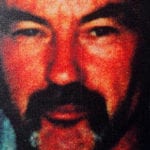 Mysteries
Mysteries  Mysteries
Mysteries  History
History 10 Surprising Stories About the Texas Rangers
 Humans
Humans 10 Philosophers Who Were Driven Mad by Their Own Theories
 Miscellaneous
Miscellaneous 10 Video-Game-Worthy Weapons and Armors from History
 Weird Stuff
Weird Stuff 10 Psychics Who Accurately Predicted Wartime Events
 The Arts
The Arts 10 Pieces of Art Inspired by a Broken Heart
 Health
Health 10 Science Fiction-Sounding New Medical Treatments
 History
History 10 Surprising Facts About the Father of Submarine Warfare
 Space
Space Ten Astonishing New Insights into Alien Worlds
 Weird Stuff
Weird Stuff 10 Bizarre Summer Solstice Rituals Still Practiced Today
 Mysteries
Mysteries Top 10 Haunting Facts About the Ghost Ship MV Alta
 History
History 10 Surprising Stories About the Texas Rangers
 Humans
Humans 10 Philosophers Who Were Driven Mad by Their Own Theories
Who's Behind Listverse?

Jamie Frater
Head Editor
Jamie founded Listverse due to an insatiable desire to share fascinating, obscure, and bizarre facts. He has been a guest speaker on numerous national radio and television stations and is a five time published author.
More About Us Miscellaneous
Miscellaneous 10 Video-Game-Worthy Weapons and Armors from History
 Weird Stuff
Weird Stuff 10 Psychics Who Accurately Predicted Wartime Events
 The Arts
The Arts 10 Pieces of Art Inspired by a Broken Heart
 Health
Health 10 Science Fiction-Sounding New Medical Treatments
 History
History 10 Surprising Facts About the Father of Submarine Warfare
 Space
Space Ten Astonishing New Insights into Alien Worlds
 Weird Stuff
Weird Stuff 10 Bizarre Summer Solstice Rituals Still Practiced Today
10 Creepiest Facts About Killer Clown John Wayne Gacy
The notorious serial killer John Wayne Gacy was convicted of the sex-related murders of 33 young men and boys between 1972 and 1978. He was sentenced to death and executed for 12 of those killings. Investigators eventually found the bodies of many victims buried in the crawl space beneath Gacy’s home.
By day, he appeared to be an ordinary husband and businessman who dressed as a clown to entertain at children’s parties during the weekends. Yet, lurking beneath his outgoing exterior was a twisted murderer who lured his victims to their deaths and buried the bodies in grisly graves. His crimes continue to haunt us today.
10 Growing up a Gacy

Born March 17, 1942, John Wayne Gacy grew up in Chicago, Illinois, with his parents and two sisters. The future serial killer’s childhood was a violent one. Gacy’s love of gardening and baking upset his alcoholic father, who would regularly beat his son unconscious. His father used a leather belt, a razor strop, and even a broomstick to administer the beatings.
Born with a heart condition, Gacy regularly experienced blackouts. Later, he recalled spending almost a year in the hospital in total between the ages of 14 and 18 due to these incidents. His father accused Gacy of faking the blackouts to gain sympathy.
During an interview with Oprah Winfrey, the serial killer’s younger sister, Karen, said, “My father, on many occasions, would call John a sissy. And he wasn’t a happy drunk. Sometimes, he would turn into a mean drunk, so we had to always be real careful.”
She added, “John felt like he never lived up to Dad’s expectations, and this went all the way into his adulthood.”[1]
9 Embalming

Growing tired of his abusive father, Gacy decided to move to Las Vegas, Nevada, when he was 20 years old. There, he took on a job as an assistant at Palm Mortuary. This stoked his early fascination with death as he watched the morticians and studied the embalming process.
Following his arrest, he revealed to psychiatrists that he had conducted “experiments” on the deceased. Gacy slept on a cot behind the embalming room, so he regularly had access to the mortuary after hours. One night, he climbed into a coffin.
In Buried Dreams: Inside The Mind Of John Wayne Gacy, author Tim Cahill writes:
John got inside (the coffin) with the body. He wanted to feel death, in the darkness. And there was a fear, a terrible fear like someone coming who would discover him there, only there was no sound at all, no one to find him, and he was still afraid.[2]
Left shaken by the incident, Gacy called his mother and asked if he could return home. Who knows what this incident and others from his childhood did to Gacy. But within a few years, the effects of these experiences were being expressed in terrible ways. In 1967, Gacy sexually assaulted a 15-year-old boy, the son of one of his friends from a political club. He was ordered to undergo a psychiatric evaluation after charges were brought against him. Gacy was diagnosed with antisocial personality disorder, and one psychiatrist noted his intense inability to take responsibility for his actions: He vehemently denied everything, claiming he had been a victim of circumstance. Gacy was sentenced to 10 years in prison but only served 18 months, as he was a model prisoner during his incarceration.
8 Pogo the Clown Alter Ego
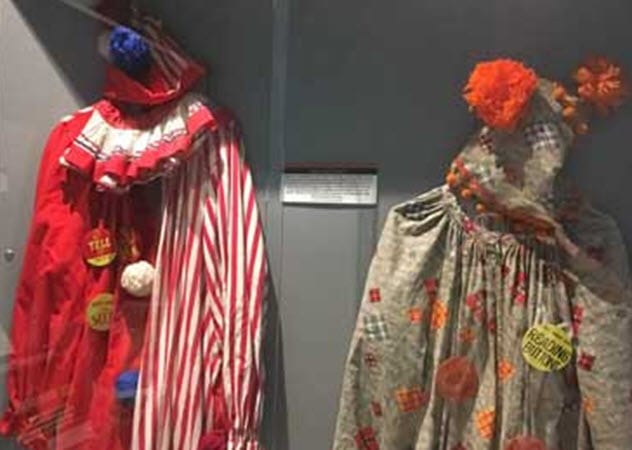
In late 1975, Gacy joined the “Jolly Joker” clown club. He performed regularly at community fundraisers as his alter ego “Pogo the Clown,” even entertaining children in the local hospital. The sinister serial killer became successful in politics and was awarded Jaycee (Junior Chamber of Commerce) “Man of the Year.”
In 1978, he escorted President Jimmy Carter’s wife, Rosalyn, during one of her visits to Chicago.[3]
Gacy adopted a secondary personality that still terrifies people today as he could hide in plain sight as a respected member of his local community. Dr. Jeffrey Walsh, a criminal justice professor at Illinois State University, explained:
[Serial killers] tend to blend into society relatively efficiently … that’s another thing people are disturbed by. Because of how horrible their acts often are, we sometimes think they look different than us or that we would recognize them. The fact is, many of them have regular lives and blend in, so they don’t meet the stereotypical views of what a monster would be like.
Gacy’s clown costume is now on display at the Alcatraz East crime museum in Pigeon Forge, Tennessee.
7 ‘The Rope Trick’ and ‘The Handcuff Trick’
Gacy’s murder victims were teenage boys and young men. The total victim count is believed to be 33 innocent lives. He lured his victims back to his home with a promise of alcohol or money in exchange for sex.
After his capture, Gacy gave an interview showing off his “rope trick” in which he could turn a length of rope and a piece of string into a tourniquet. This was the same way the bodies of his victims had been found—with the tourniquet garroted around their necks.
Another sinister act Gacy pulled on those who had fallen into his trap was “the handcuff trick.”[4] He placed handcuffs on the boys who were under the impression that it was a magic trick. Eventually, Gacy revealed that the cuffs were real. He often tortured his victims as they were asphyxiated or overpowered with chloroform.
Only one of his victims died from stab wounds to the chest. All the others died from strangulation or suffocation.
6 Finding the Bodies

The murder of Gacy’s final victim, 15-year-old Robert Piest, led to the capture of one of the vilest killers of all time. Unlike many of the previous victims, Piest was not a runaway. He had told his parents that he was heading out to speak to a contractor about a job.
When he failed to return home, the police were called. They were told that Gacy was the last person to speak with the boy. The officers visited Gacy’s house, where he had been living alone for two years following the divorce from his wife.
Former Des Plaines officer Mike Albrecht recalled, “That odor from the heat, from the crawl space. [We] said right away, it smelled like a morgue!”
After Gacy spoke with his attorney, the investigators were able to carry out a full search on the property and uncovered 29 bodies buried mostly in the crawl space. Four other bodies were found in Des Plaines River after being thrown from the I-55 bridge. Albrecht stated, “Gacy was just pure evil. He was just an evil, evil man.”[5]
5 Multiple Murders the Same Day
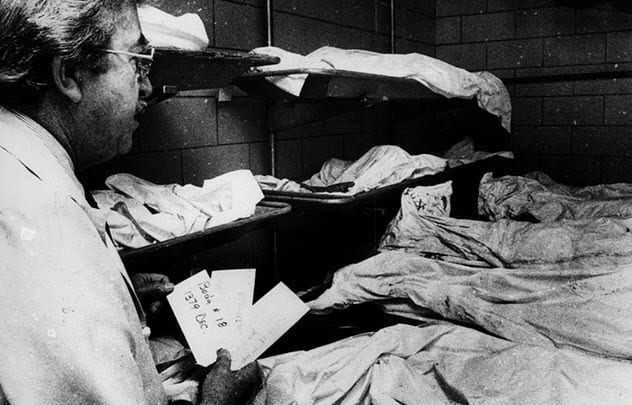
Gacy’s compulsion to kill led him to commit multiple murders on the same day. On October 24, 1976, 16-year-old Kenneth Parker and 14-year-old Michael Marino were last seen alive outside a restaurant before they were abducted. Both bodies were found in the same grave under Gacy’s home. Two days after the murders, Gacy struck again and killed 19-year-old William Bundy. His body was also found buried in the crawl space.
Criminal defense attorney Robert Stephenson strongly believes that Gacy might have had an accomplice. When 18-year-old Robert Gilroy was murdered, Gacy was out of town, and a “cloth-like” object had been placed in the victim’s mouth—a different method from what Gacy used.
“There is significant evidence out there that suggests that not only did John Wayne Gacy not operate alone, he may not have been involved in some of the murders, and the fact that he was largely a copycat murderer,” Stephenson revealed.[6]
4 The ‘Jack Hanley’ Personality
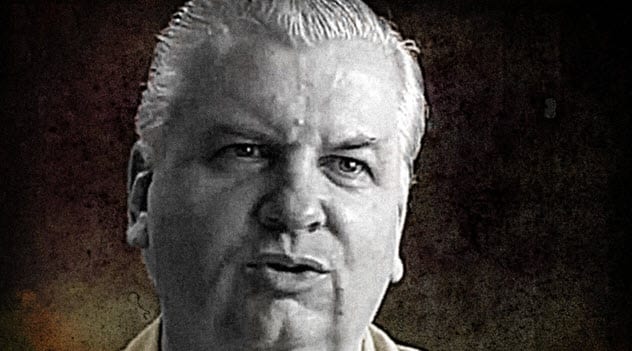
In the book Killer Clown: The John Wayne Gacy Murders by Terry Sullivan and Peter T. Maiken, Gacy told the investigators: “There are four Johns.” The twisted serial killer claimed that there was John the contractor, John the clown, John the politician, and a fourth personality by the name of Jack Hanley. Gacy said that Jack was the real killer who did all the evil things.
During his pretrial statements, Gacy argued that he didn’t realize the boys were dead until he woke up the next day and was led to believe that “Jack” had committed the murders. Later, he attempted to rationalize his actions by saying that the boys had killed themselves with the ropes around their necks.
Gacy, a master manipulator, was thrilled to assert control over those with whom he interacted. In his own sinister words, he confessed, “I lost count of how many I killed.”[7]
3 Creepy Paintings
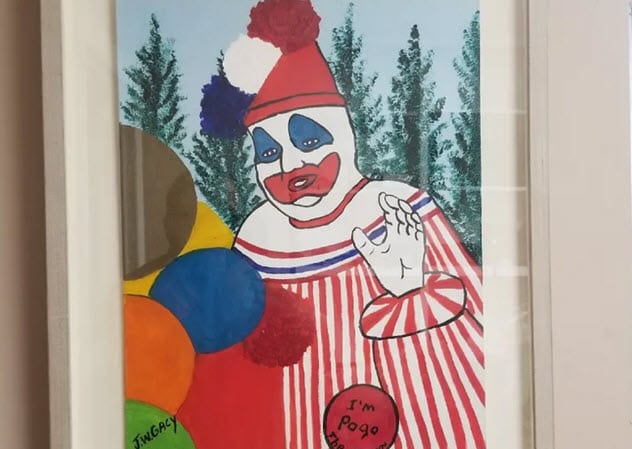
For many collectors, “murderabilia” can command a high price. The creepy paintings created by the same hands that killed Gacy’s victims are hot property fetching around $10,000 each in auctions.
Many of the serial killer’s portraits, which he painted from his prison cell, depicted his alter ego, Pogo the Clown. On the reverse of one artwork, he wrote, “Enjoy the painting as much as I enjoyed doing it—J.W. Gacy.” In 2017, following the release of Stephen King’s IT remake in movie theaters, there was new interest in the paintings.
A representative from Mullock’s Auctioneers, who sold one of Gacy’s paintings, said, “This is certainly an interesting subject that has been fascinating to catalog. We are aware that there are collectors of this type of material across the world and do appreciate that this is a sensitive subject.”[8]
2 Handyman Behind Bars

In March 1980, Gacy was found guilty of 33 counts of murder and sentenced to death. He was transferred to the Menard Correctional Center in Chester, Illinois, where he spent the next 14 years on death row.
Despite his violent crimes, the security surrounding Gacy over those years was so relaxed that his fellow inmates started a petition. Gacy had become the handyman of the prison and was allowed to carry sharp tools for maintenance work.
The worried inmates penned the two-page complaint and raised their concerns that the serial killer was in possession of “two putty knives, both sharpened, [one 7.6-centimeter (3 in) wide and the other 15.2-centimeter (6 in) wide].”
Corrections Department spokesman Nick Howell argued, “A few months ago, some of the inmates tore up the visiting room pretty good. Gacy went in and cleaned that stuff up. That is an area we do not want to send other (non-condemned) inmates into and we don’t like to send tradesmen in there, either.”[9]
1 No Remorse
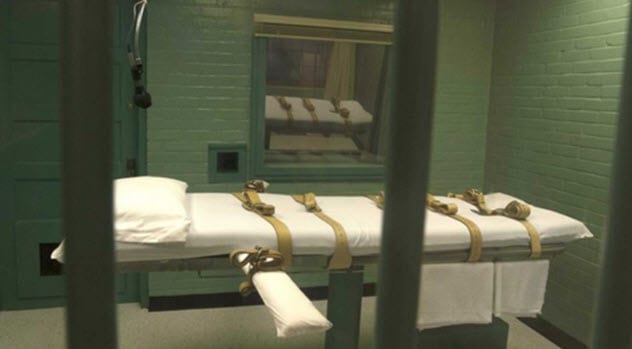
On May 10, 1994, Gacy was executed at Stateville Correctional Center by lethal injection. The execution was delayed by about 18 minutes as the lethal chemicals had begun to gel and would not flow through the delivery tube. However, at 12:58 AM, the serial killer was pronounced dead.
Despite overwhelming evidence of his guilt, Gacy still proclaimed his innocence. Several supporters believed that he should not be executed for his crimes. Jay Miller of the American Civil Liberties Union said, “It’s an American tragedy that we’re doing this. No matter what that person did, we’re setting a terrible example that human life is really not worth it.”
For his last meal, Gacy requested Kentucky Fried Chicken, fried shrimp, french fries, and fresh strawberries. His final words before his execution: “Kiss my ass.” The cold killer will always be remembered as one of the most twisted serial killers of all times.[10]
Cheish Merryweather is a true crime fan and an oddities fanatic. Can either be found at house parties telling everyone that Charles Manson was only 157 centimeters (5’2″) or at home reading true crime magazines. Twitter: @thecheish
Read more creepy facts about serial killers on 10 Craziest Privileges Serial Killers Enjoyed In Prison and 10 Creepy Photos Of People Unaware They Are With A Serial Killer.





